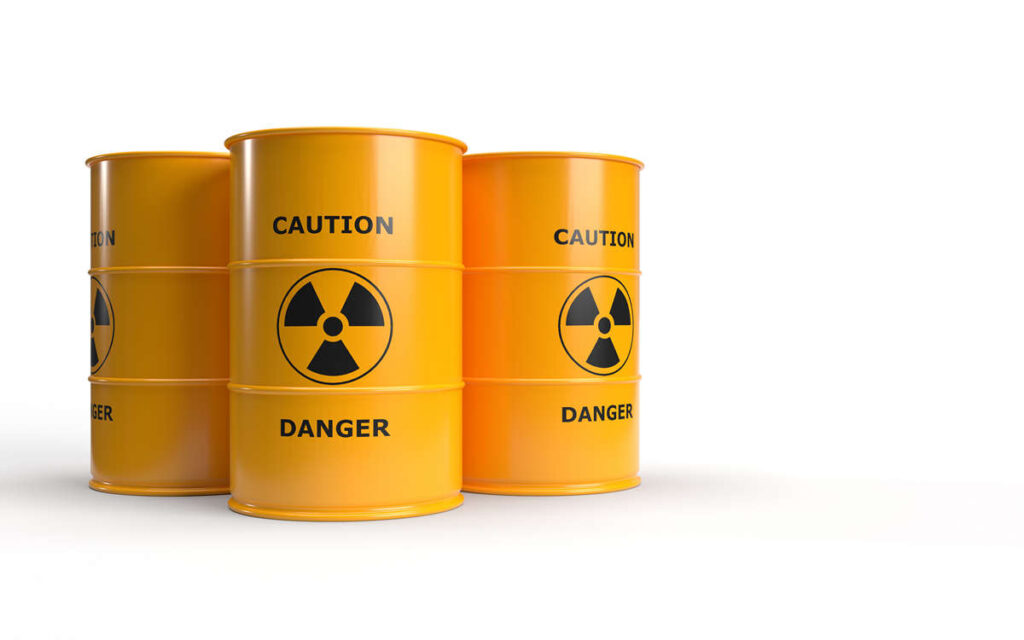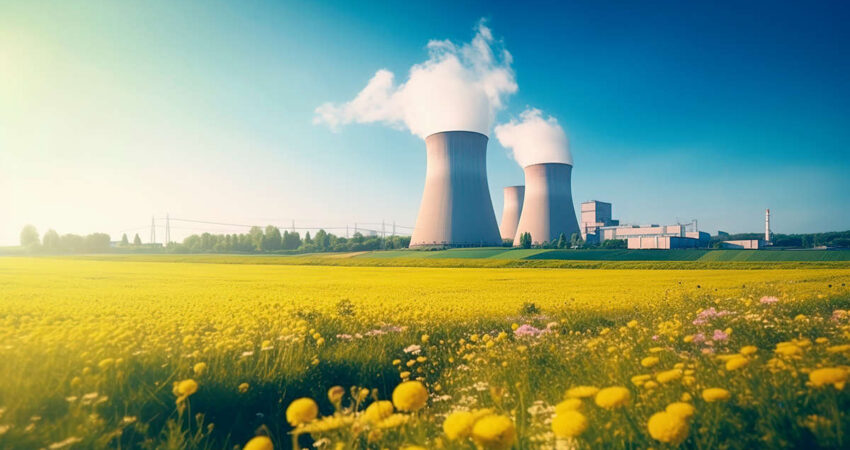Adobe: 609055210
It looks like nuclear energy globally is experiencing a genuine renaissance, particularly in Europe. However, the huge costs and complexity of building new nuclear power stations prevent nuclear energy being a quick fix for all the problems of Western countries. Moreover, without Russia it is simply not possible.
In March 2024, the first international summit on nuclear energy was held under the auspices of the International Atomic Energy Agency in Brussels; this demonstrated that nuclear energy is regarded as a key to strengthening energy security and decarbonization. The summit underscored a clear change in the global mindset towards nuclear. “For a long time, many of us had reservations … but times have changed, safety technology has evolved, and of course our views on the urgency of a fossil-free future have changed dramatically in recent decades,” said Mark Rutte, Prime Minister of the Netherlands. “It is true that for the transition to succeed we need every carbon-free energy source we can get. But we also need a source that is available come rain or shine. And that is nuclear energy.”
The summit, which was attended by senior representatives from more than 30 countries, noted that Russia is still trying to sow division within the international community and is actively using energy issues in order to do this. As European Union Chairman Charles Michel put it, “The Kremlin effectively used energy as a weapon against Europe to disrupt our economies, weaken society, and undermine confidence.”
In this vein, nuclear energy is viewed as a means of increasing countries’ independence from foreign energy suppliers. Summit attendees clearly recognized that to use this tool, political will is not sufficient and significant financing is also needed. Belgian Prime Minister Alexander De Croo in particular called on the European Investment Bank to start financing nuclear energy projects. “There is no lack of private financing. Quite the contrary, what lacks is the right circumstances to get private financing going and a multilateral bank should be a lever to multiply investment,” stated De Croo.
In fact, a real boon for the nuclear industry in the EU was the adoption of the EU Taxonomy– a guide to green investment – in 2022. After much debate, the document included gas and nuclear as “bridge fuels” to meet the bloc’s net zero emissions target. The Taxonomy opened a route to channel billions of private money into such projects – now regarded as completely climate-friendly.
First and foremost, this speaks to the fact that the European Union has long been moving purposefully towards a policy of favouring nuclear energy. And it seems that it is France that will play a leading role in this process.
France as a role model for the world
France is indisputably the EU’s leader in nuclear energy as well as one of the world’s leaders. The country is second only to the United States for how many functioning nuclear reactors it has; these number 56 and have a total capacity of around 61 GW. Around 70% of France’s electricity is obtained from nuclear power stations – and Paris does not intend to rest on its laurels. Under President Emmanuel Macron, plans for 14 new reactors have been announced, with investment decisions already having been taken on six of these.
In mid-2023 France took the decision to fully nationalize EDF, the largest nuclear power station operator in the world. Although France has always been a major producer of nuclear energy, only recently government energy policy was aimed at cutting nuclear energy generation by 50% by 2025. In 2019 this target was put back to 2035, before being abandoned in 2023.
The French nuclear revival also reflects wider global trends. After the sharp reduction in the number of nuclear facilities following the incident at the Fukushima nuclear power station in 2011, it has gradually started to grow again over the last 13 years.
Even before the summit in Brussels, the COP28 UN Climate Change Conference saw more than 20 countries sign a declaration pledging to triple their existing nuclear power capacity by 2050. Thus, the United Kingdom plans to build a number of small nuclear power plants soon and aims to boost nuclear’s share of energy generation from 15 to 25 % by 2050. Even Sweden, which a few decades ago was a fervent opponent of nuclear energy, has now revised its national plans in favour of “fossil-free” – not fully-renewable – energy and wants to build at least two reactors.
Can Germany be incorporated into this process?
In this regard it is interesting to analyse the example of Germany, Europe’s leading industrial power, which for political reasons has assumed the position of chief opponent of nuclear energy. In April 2023, Germany shut down its last three reactors.

Adobe: 570378019
In 1980, the Greens, now a ruling party, was born out of the movement against nuclear weapons and nuclear energy, and closure of all nuclear power stations was a key point of its programme. Later, in 2011, this position became mainstream and the official government position because of the chord it struck with the public after the incident at the Fukushima reactor in Japan. The question of the safety of nuclear energy could now simply not be ignored.
Despite periodic calls to reconnect old reactors to the grid, there is a strong feeling that phasing out nuclear energy has been too sweeping and the public will not understand such a U-turn. This is also recognized within government. Environment Minister Steffi Lemke commented that “no power company would build a nuclear plant in Germany, because the costs would be far too high. Nuclear power plants can only be built with massive public and hidden subsidies, including partial exemption from insurance requirements.” At present it seems nuclear power has really left Germany for good.
The bitter truth about nuclear energy
As mentioned above, nuclear energy is being seen ever more frequently as a means of strengthening the EU’s and other countries’ independence from Russia in issues of energy. At the same time though, Russia remains the dominant player in the market for reactor fuels and one of the most active operators in the construction of nuclear power stations worldwide. It is therefore logical that sanctions against the Russian nuclear industry have not yet been introduced – in contrast to restrictions on Russian oil and gas.
The US is the world’s largest producer of nuclear energy, accounting for 30% of worldwide nuclear generation, and does not seem to have misgivings about Russia’s highly affordable nuclear fuel. On the contrary, it spends an estimated $1 billion per year on nuclear fuel from Russia to fuel 92 commercial nuclear reactors.
The United States is of course showing in every way possible its dislike for this state of affairs and its readiness to renounce Russia’s services. In March, a representative of the US Department of Energy said that it plans to increase financial support for the domestic production of nuclear fuel in the United States, in order to help consumers throughout the world change supply chains and escape their dependence on Russia. Kathryn Huff, assistant secretary for nuclear energy at the Department, told Reuters that at the Brussels nuclear energy summit, countries had tried jointly to determine the amount of government investment needed to support the fuel supply chain. At the moment, the United States intends to direct $2.7 billion towards these goals – and this sum could be increased in the future, Huff believes.

Adobe: 494554694
However it is necessary to understand that this is a matter for the distant future, since the investment and labour costs for uranium mining, enrichment and processing far exceed those of typical commercial energy projects. Russia’s Rosatom controls 40% of global processing facilities and 46% of total world enrichment capacity. Moreover, the Russians are ahead of their Western counterparts in producing the novel types of fuel required for the prospective fourth generation of nuclear reactors, which have distinct technological structures. In addition, Rosatom is the most active player in the world in terms of constructing nuclear reactors for foreign clients. Dozens of reactors are under construction by Rosatom in countries such as Bangladesh, China, Egypt and Hungary.
A nuclear world ahead
According to forecasts by the International Energy Agency, nuclear energy production will double by 2050; however, since overall energy production is also forecast to double, nuclear energy’s market share is expected to remain in its current range of 8-10% of overall global energy. It is difficult for nuclear energy to gain a significant market share; the main restraining factor is not safety, as commonly thought, but purely economic: reactors typically have a lifespan of between 20 and 40 years before they must be decommissioned.
Experts believe that nuclear energy globally will not be able to repeat the boom seen from the 1970s to 1990s for several reasons. Firstly, nuclear power stations have longer construction periods than all other types of power station, and their cost is constantly increasing: investing in them will remain a risky and difficult undertaking.
Secondly, unlike other industries, nuclear energy requires a strong state hand. In this sector, private companies are simply less competitive, due to the enormous capital and scientific expenditure involved. Government intervention in the industry has been growing in many countries. Currently, around 45% of the world’s nuclear power capacity is entirely state-owned, which is hardly a sign of healthy industrial development.
Thirdly, although the risk is constantly decreasing thanks to technological developments, possible incidents at facilities are potentially too far-reaching to elicit unreserved support from the majority of the public worldwide. This risk factor can no longer be overlooked. Therefore if we are to expect an energy boom, it will not be nuclear, but green.

